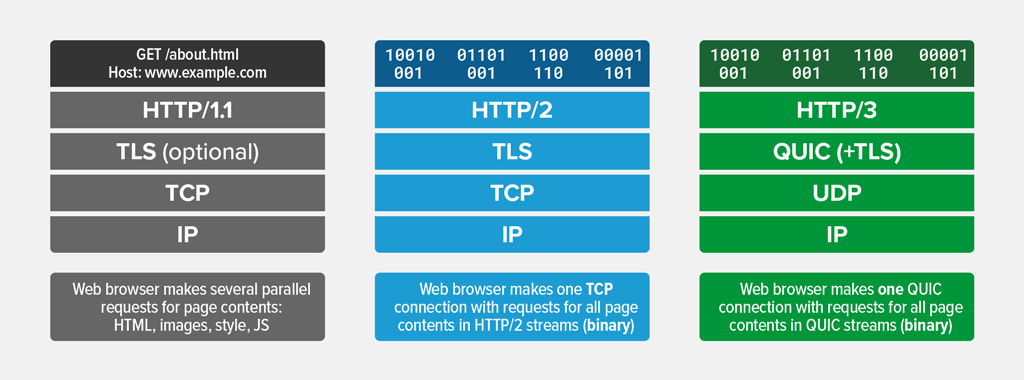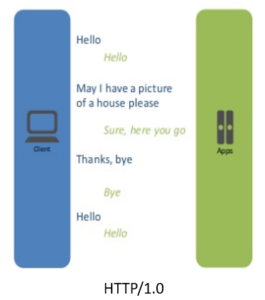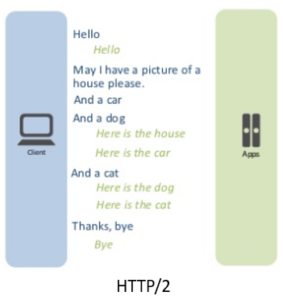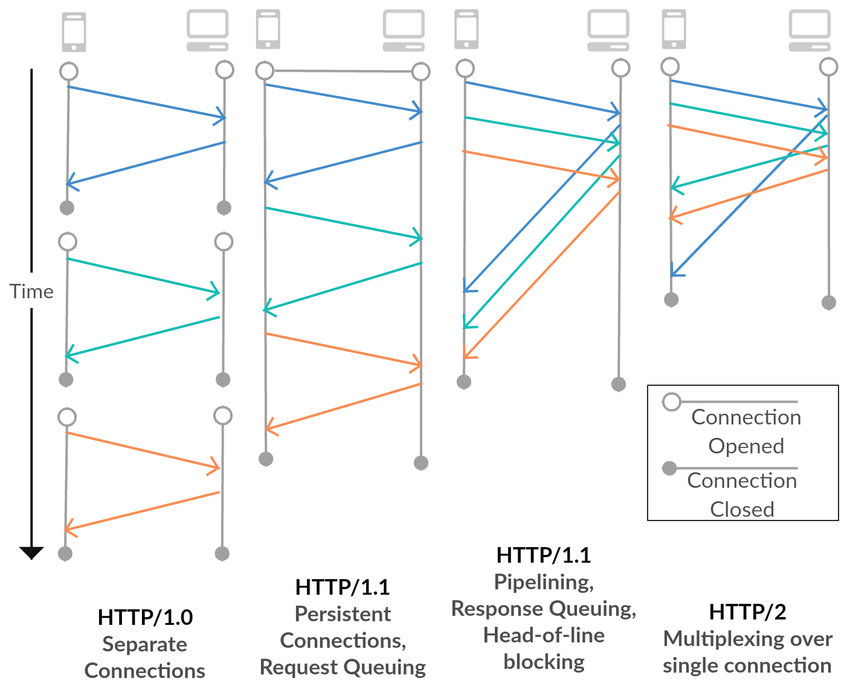Http Version Comparison
HTTP
Preview
| Year | HTTP Version |
|---|---|
| 1996 | 1.0 |
| 1997 | 1.1 |
| 2000 | HTTPS |
| 2015 | 2.0 |
| ??? | 3.0 Draft |

 |
 |
 |
-
HTTP/1.0
For every TCP connection there is only one request and one response.
-
HTTP/1.1
It supports connection reuse i.e. for every TCP connection there could be multiple requests and responses, and pipelining where the client can
request several resources from the server at once.However, pipelining was hard to implement due to issues such as head-of-line blocking and was not a feasible solution.
-
HTTP/2
Uses multiplexing, where over a single TCP connection resources to be delivered are interleaved and arrive at the client almost at the same time.
It is done using streams which can be prioritized, can have dependencies and individual flow control.
It also provides a feature called server push that allows the server to send data that the client will need but has not yet requested.

http 1.0
-
No Connection
Each request from the browser need build a connection with the server, once the server has handled the request and it will stop the tcp connection
immediately. -
No State
The server do not trace every client, and record the past requests too.
http 1.1
- persistent connection
- Host header is required
- pipelining
- cache-control
- content negotiation
https
https ==> HTTP + SSL
http 2.0
- Binary Protocol
- Low overhead in parsing data — a critical value proposition in HTTP/2 vs HTTP1.
- Less prone to errors.
- Lighter network footprint.
- Effective network resource utilization.
- Reduced network latency and improved throughput.
- Eliminating security concerns associated with the textual nature of HTTP1.x such as response splitting attacks.
- Efficient and robust in terms of processing of data between client and server.
- Compact representation of commands for easier processing and implementation.
- Enables other capabilities of the HTTP/2 including compression, multiplexing, prioritization, flow control and effective handling of TLS.
- Request Multiplexing
- Allows you to download web files asynchronously from one server.
- Header Compression
- Server Push
- The client saves pushed resources in the cache.
- The client can reuse these cached resources across different pages.
- The server can multiplex pushed resources along with originally requested information within the same TCP connection.
- The server can prioritize pushed resources — a key performance differentiator in HTTP/2 vs HTTP1.
- The client can decline pushed resources to maintain an effective repository of cached resources or disable Server Push entirely.
- The client can also limit the number of pushed streams multiplexed concurrently.